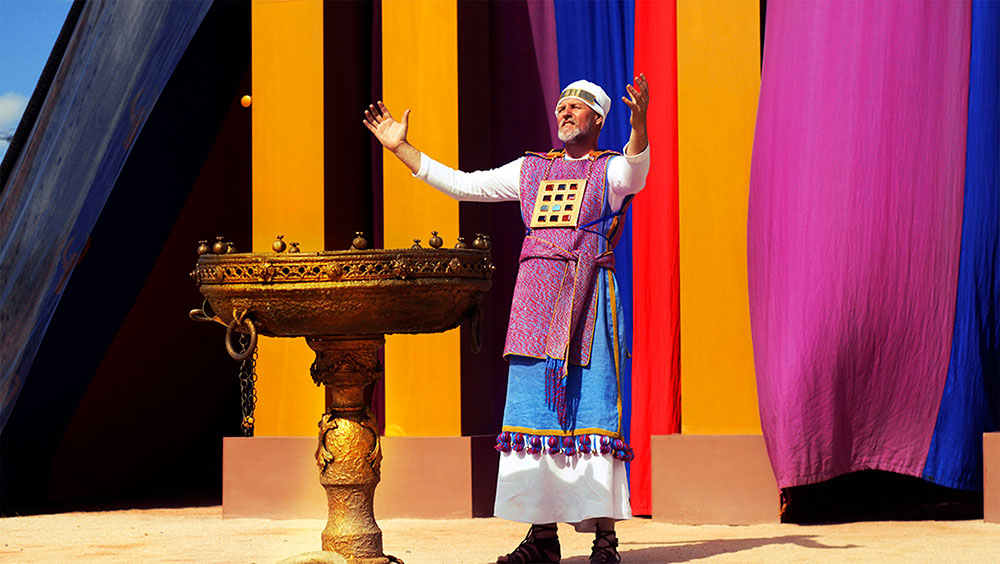Stones from the Altar
A few days ago, I was in the sanctuary of the Temple of Solomon and I kept meditating on what I was seeing…
Hello Bishop!
A few days ago, I was in the sanctuary of the Temple of Solomon, waiting for the meeting to start, and I kept meditating on what I was seeing. More specifically, I was meditating on the twelve coloured stones on the altar of the Temple. The only thing I knew about them was that they represented the twelve stones on the breastplate of the high priest, and that they symbolised the twelve tribes of Israel.
But why are they on the altar of the Temple now? Why are they in that position? It could not have been by chance or merely as ornaments. I knew that there was a deeper meaning to them, so I asked God about it. I read the verses that talk about the stones of the breastplate and I began to meditate on what I was reading.
Then, I realised the extent to which the choice to place these symbols in the Temple of Solomon was made by God Himself. I don’t even know if the people who were used by God to carve out the details on the stones were aware of all this, but I saw God’s care in communicating His will to us in every detail.
As we already know, the stones on the altar refer to the stones that were on the priest’s breastplate, the creation of which was directed by God to Moses. According to God, each stone would represent a tribe of Israel, so the twelve stones represented the totality of His people. But in order to understand what this means to us today, we need to understand why they were placed on the priest’s breastplate. And God explains:
“And you shall make holy garments for Aaron your brother, for glory and for beauty.” Exodus 28.2
Therefore, the priest would carry the stones over his heart as he entered the sanctuary and, through the stones, the people would also symbolically enter the presence of God. The first thing I noticed was that He wanted to be close to His people so much that He found a way to have them in the Holy of Holies, even at a time when only the high priest had access.
Today, by faith, we are the people of God. So, we are the stones – the twelve stones that represent the totality of the children of God. When we surrender our lives to Him, we become a part of Him, represented by the altar. That is why the stones that were previously fastened to the priest’s breastplate, are fastened to the altar today. Before, they were on the priest’s breastplate, dependant on man in order to stand before God. Today, fixed directly onto the altar, we are one with Him. As the Lord Jesus said in His prayer for us:
“I do not pray for these alone, but also for those who will believe in Me through their word; that they all may be one, as You, Father, are in Me, and I in You; that they also may be one in Us, that the world may believe that You sent Me.” John 17.20-21

That is why the stones were not placed on the floor of the altar, but in front of the altar, which is well lit and visible to all. This is because the first contact that many people out there have with God is through the lives of those who are on the altar, and one with the altar. And the aim of being seen and having lights on the stones of the altar – which we are – was also described by the Lord Jesus:
“Let your light so shine before men, that they may see your good works and glorify your Father in heaven.” Matthew 5.16
This is our role as precious stones set in front of the altar: To be in God, enlightened from the inside out by the Light that comes from Him (the Holy Spirit), shining before men through our good works. We are His masterpiece in this world.
Therefore, what should the life of someone who has been called to become a precious stone set on the altar – in the heart of God, visible to the world – be like? Certainly, a life of complete trust and holiness to the Lord; a life dedicated to doing His will and not ours. After all, we no longer belong to ourselves, but to the Altar.
May God bless you and Mrs Ester even more!

 Portuguese
Portuguese
 Spanish
Spanish
 French
French
 Italian
Italian
 Haiti
Haiti
 Russian
Russian


